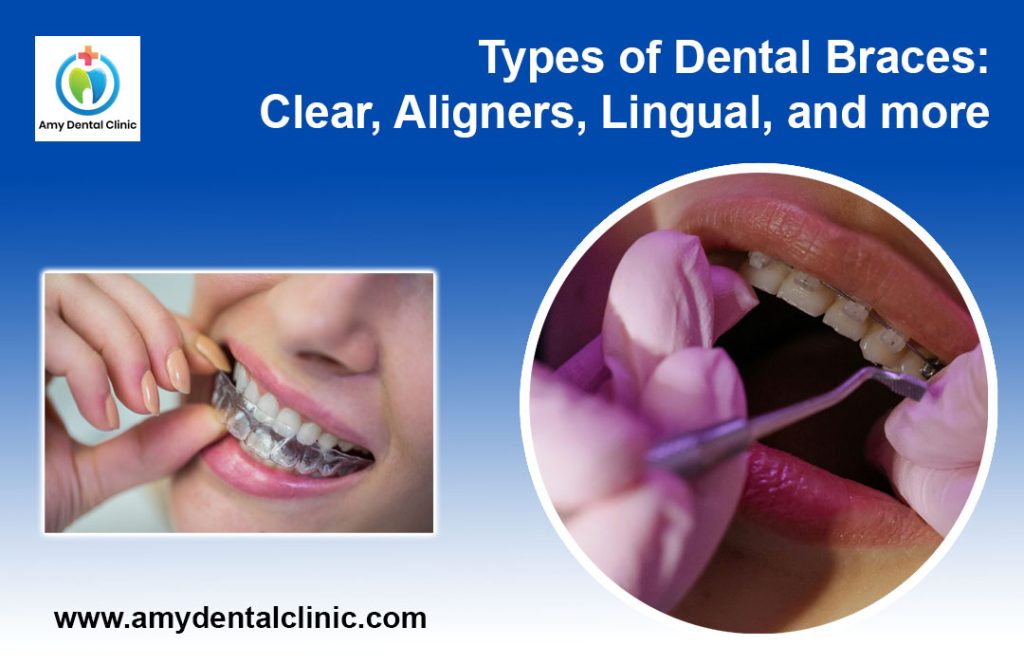For different kinds of teeth, we have different types of dental braces to improve the alignment and regain your confidence. Ceramic, Traditional, and Lingual are the different types of braces, each associated with a unique set of advantages and disadvantages that must be considered before applying the braces for any dental patients.
What are Dental braces? Orthodontic devices called dental braces are used to straighten and align teeth. It is particularly useful for positioning teeth with a person’s bite and improving dental health.
Moreover, to assist you in making an informed decision, we’ll go over all of the different types of braces and evaluate their suitability based on aspects like visibility, comfort, and treatment duration. So, whether you are an adult or a teen seeking Dental care, recognizing your options will help you choose the best braces for you.
At Amy dental Clinics, we help you get the right braces according to your teeth problem. This article covers all the details of the different types of braces for teeth. Also, it is important to understand their differences and benefits before applying.
Types of Dental Braces and Their Uses
Your problem, your tastes, and the severity of your ailment will all play a role in determining the type of brace that is ideal for you. With constant, gentle pressure, braces gradually move your teeth into their proper positions. If you want to have the right braces for you, then Amy Dental Clinic, the best dental clinic in USA welcomes you.
| Types of Dental Braces | Meaning | Pros | Cons |
| Traditional Metal Braces | The most popular and extensively used kind of braces is traditional metal braces. | Proven Effectiveness, Cost-Effective | Visibility, Comfort |
| Ceramic Braces | Because ceramic braces use tooth-colored or clear brackets, they are less obvious than metal braces, but they function similarly. | Aesthetics, effective treatment | Fragility, staining |
| Lingual Braces | Due to their placement on the back of the teeth, lingual braces are invisible from the front. | Invisible, effective for complex cases | Cleaning challenges, higher cost |
| Clear Aligners Braces | Clear aligners, such as Invisalign, are contemporary substitutes for traditional braces. | Discreet, Easy removal | Discipline Required, Not Suitable for All Cases |
Note: Traditional metal braces are no longer the only option; instead, patients now have a variety of solutions to suit their preferences and lifestyle. Braces are not one-size-fits-all. Each variety has its own set of pros and disadvantages, so it’s critical to select the one that best meets your requirements.
1. Traditional Metal Braces
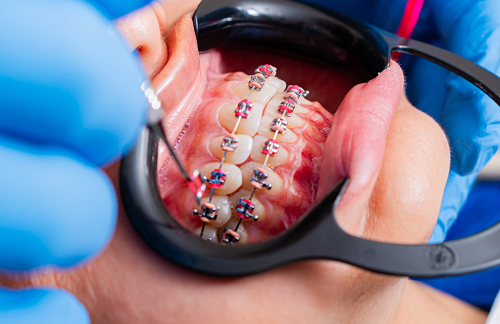
When someone thinks about braces, traditional metal braces might be the first thing that originates to mind. Stainless steel brackets, wires, and bands are examples of traditional braces, also referred to as metal braces.
These steel bands are joined or connected to one another by a thin archwire, which applies pressure to the teeth to gradually move them into the correct position. Therefore, when you smile, your metal braces are visible.
2. Ceramic Braces
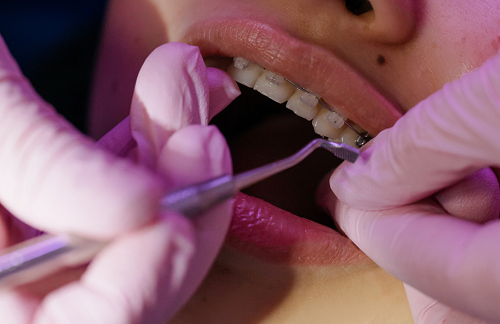
Ceramic braces are similar to traditional braces, but the brackets of Ceramic braces are clear, transparent, or less noticeable. The braces are less visible to others. This makes Ceramic braces popular among adults who need orthodontic treatment options.
But the patients wearing it can find that the elastics become discolored, which can sometimes cause discoloration or marks on their teeth. Ceramic braces have the drawback of being more brittle than metal braces, which increases their likelihood of breaking.
3. Lingual Braces
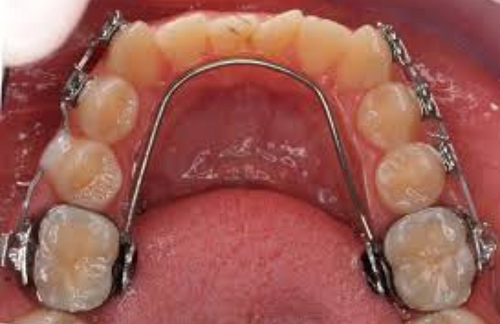
One of the types of Dental Braces is Lingual braces, which are similar to traditional braces. However, rather than the front of your teeth, they are placed on the back surfaces. Most people prefer lingual braces since they don’t want other people to see they have them. Because they are positioned inside the teeth and are not readily apparent, lingual braces have grown in popularity among teenagers.
4. Clear Aligners Braces
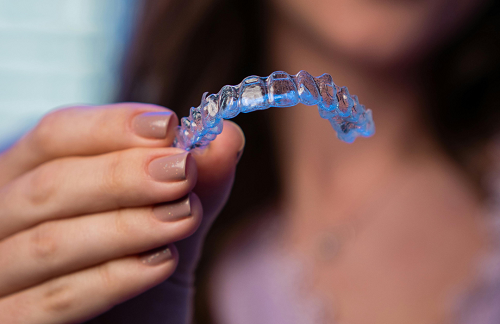
Clear Aligners Braces, also popularly known as Invisible Aligners or invisible braces. For people who would rather have a less noticeable treatment, these braces are an appealing alternative because they are almost undetectable. It is easy to remove or can be taken out easily when you are eating, drinking, and cleaning.
Factors to Consider Before Using Braces
- Orthodontic Needs: To choose the best kind of braces for you, evaluate the extent of your Orthodontic Problems.
- Budget: Although prices can differ, a lot of clinics provide financing alternatives and flexible payment schedules to help control the cost.
- Lifestyle Preferences: Consider how your braces might fit into your daily schedule and how noticeable you would like them to be.
Types of Dental Braces Cost?
Due to high taxes and living costs in larger cities like New York, the cost of braces for adults can range from $1,700 to $13,000, depending on several factors, including the type of braces. But the price may differ in other regions. The cost of the different types of dental braces are mentioned below:
- Traditional braces (Metal braces): $3,000 – 7,000
- Ceramic braces: $4,000 – 8,000
- Lingual braces: $8,000 – 10,000
- Clear aligner braces: $4,000 – 7,400
Wrapping Up Types of Dental Braces
Choosing the appropriate braces is the first step towards having a healthier, more appealing smile. Whether you choose standard metal braces, ceramic braces, lingual braces, or clear aligners, understanding your options can help you make the best orthodontic treatment options. Amy Dental Clinic, the best dental clinic for complete oral care with its comprehensive range of treatments and skilled team, is fully equipped to assist you in achieving your smiling goals.
With the right care and application, any of these solutions could help to straighten misaligned teeth. However, each mouth is unique. So, see your orthodontist to determine which choice is best for you or your child’s smile. This article aims to broaden understanding and knowledge of general oral health areas.
Frequently Asked Questions
Q. What are the different types of braces for teeth?
Ans. The different types of braces for teeth are traditional metal braces, ceramic braces, lingual braces, and clear aligner braces.
Q. Name different types of braces bands?
Ans. The different types of dental braces bands are Class I elastics, Ceramic braces, Class II elastics, Metal braces, Lightforce braces, Lingual braces, Vertical elastics, Cross elastic, and Ligatures
Q. Who cannot get lingual braces?
Ans. Lingual braces are not available to people with severe bite issues.
Q. What’s the most painful type of braces?
Ans. According to the sources, the most painful types of braces are traditional metal and ceramic braces. As they are a bit uncomfortable.

